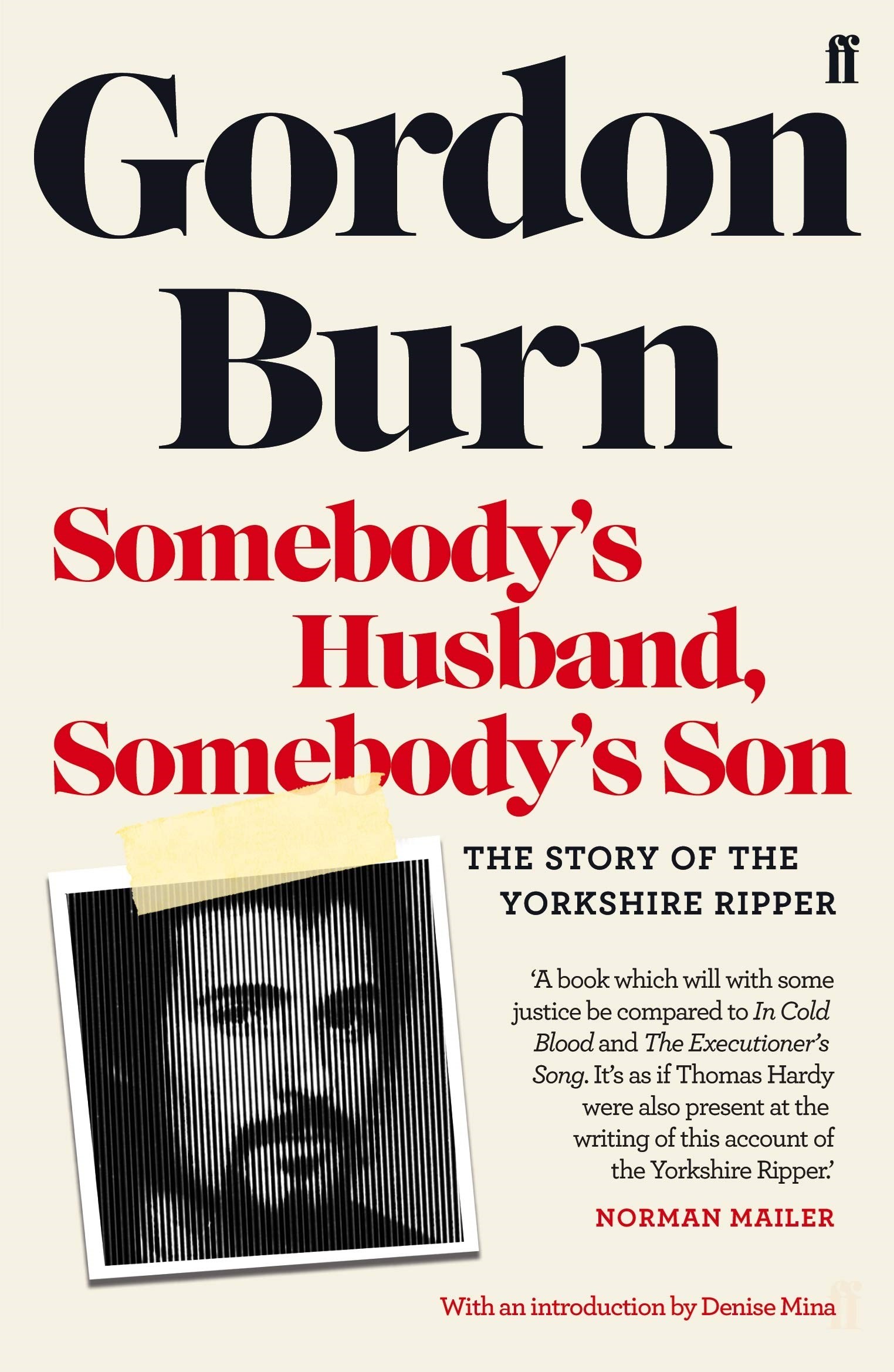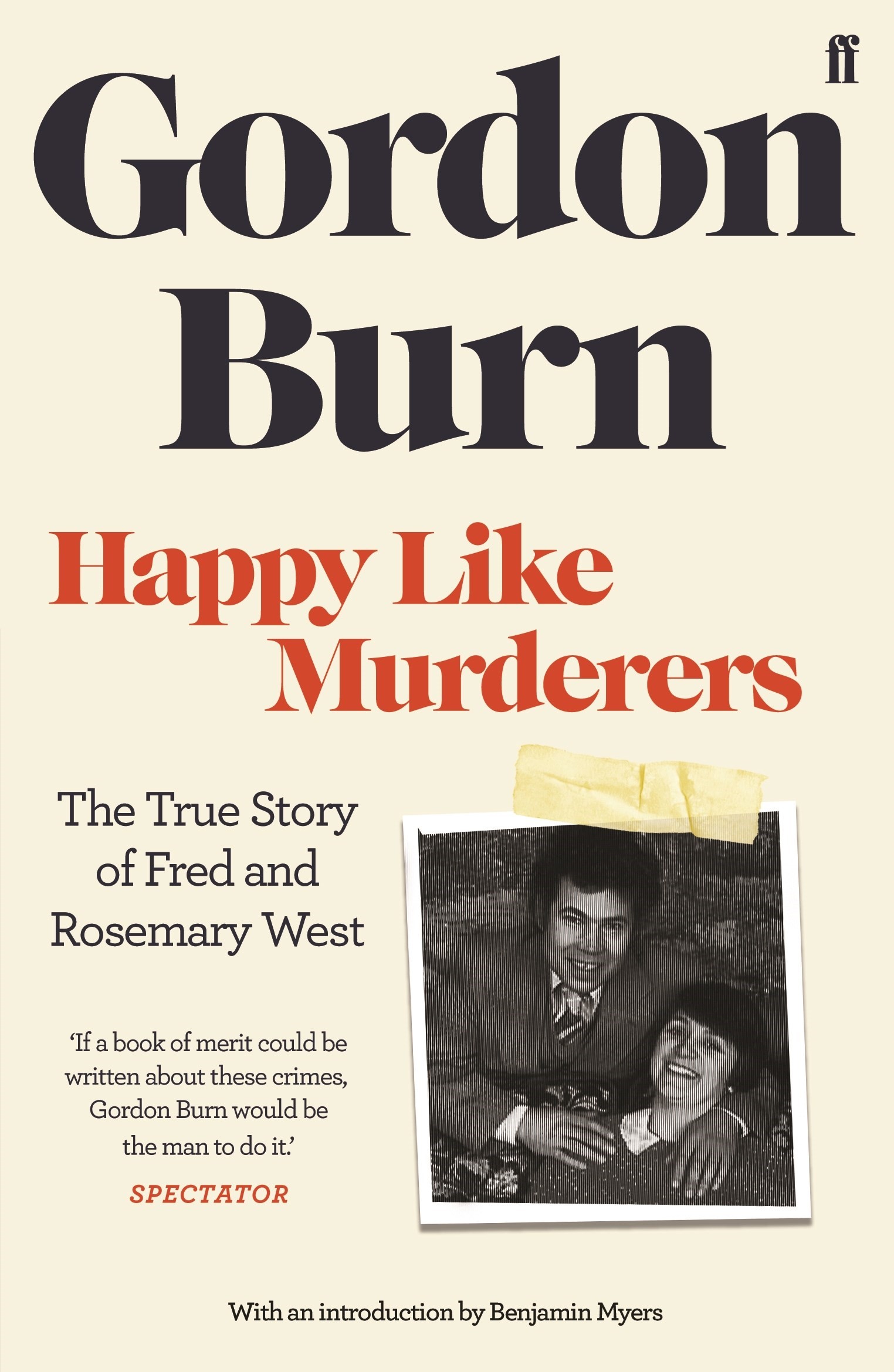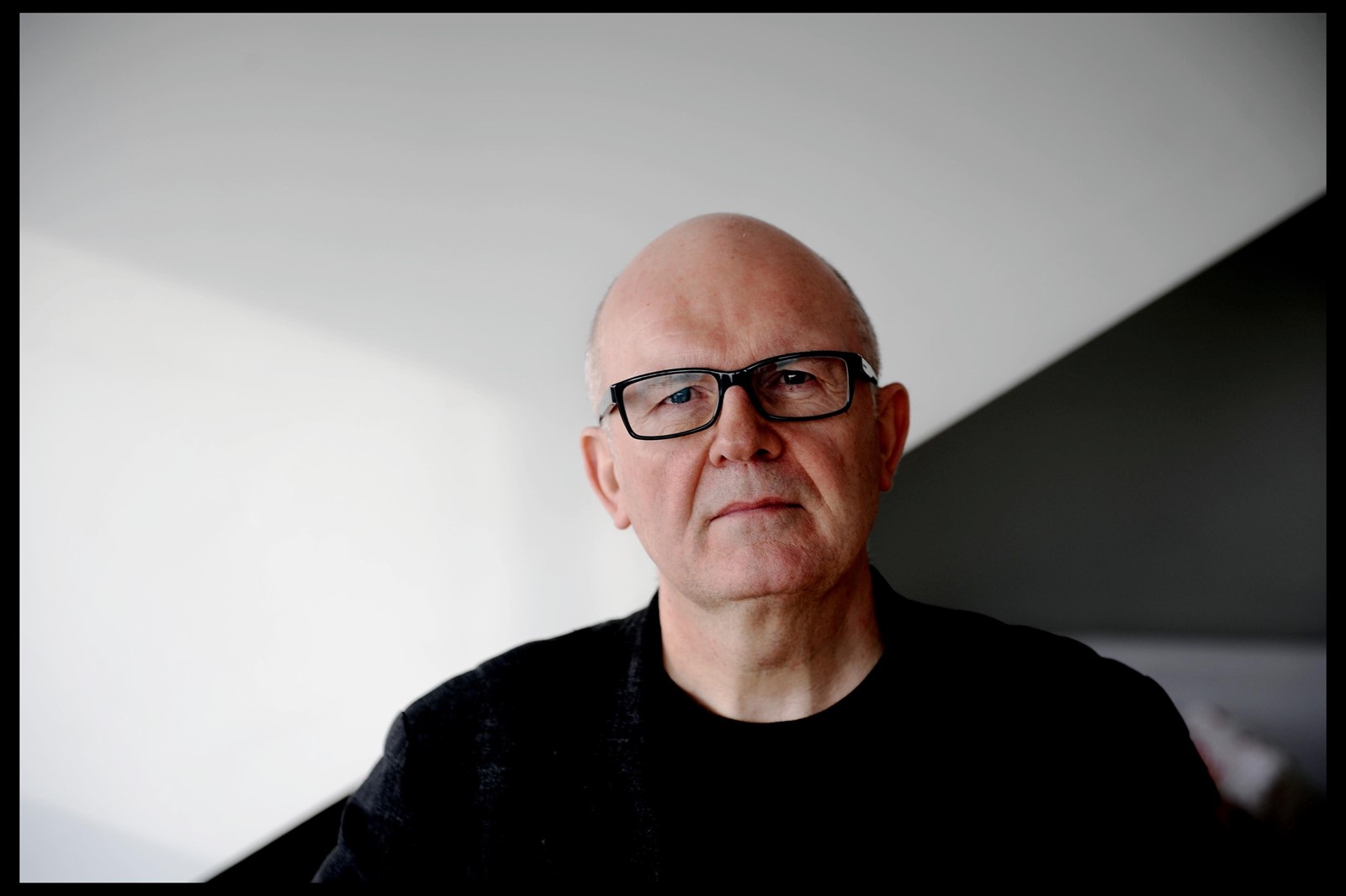About halfway through Gordon Burn’s first book, the nonfiction classic Somebody’s Husband, Somebody’s Son (1984), we’re invited to a Sunday night family gathering at the new Bradford home of Peter and Sonia Sutcliffe. It’s October 1974 and the young couple have just moved into the first place of their own. After tense beginnings, the night dissolves into contagious hilarity. Peter sends an undercooked potato skidding from plate to floor, a bit he helplessly returns to, again and again. His sister Jane later reckoned she’d never laughed so much in her life.
On dropping his parents home, Peter made his usual point of walking them right up to the front door and waiting until both were safely inside. The sensitive, fastidious son didn’t go straight back to Bradford, although it was already past midnight. Instead, he pressed straight through the centre of town and out onto the Manchester Road. In less than an hour, Burn writes, “he was ripping the clothes off the body of the woman he had murdered eight days before.”
Gordon Burn died in 2009, aged 61, less than a year after the publication of his fourth novel, Born Yesterday. One of the most original English prose stylists and reporters of the late 20th century, his influence on a range of writers – from David Peace, to Andrew O’Hagan and Ben Myres – is well documented. Few before Burn had more thoroughly picked apart the often barely concealed squalor and violence at the heart of 20th-century British society.
His subjects, whether Sutcliffe, or Fred and Rose West (in 1998’s horrifying, strenuously composed account of their lives, Happy Like Murderers) are often squatting in plain sight, just beyond the closed front door or shadowed in suburban anonymity. It wasn’t just killers that occupied Burns' talent. Even fewer writers have more acutely documented the corrosive effects of celebrity. “To be famous,” he wrote, “is, in many ways, to be an exile from life.” This is the thread that connects his superficially disparate gallery of infamous murderers, dead pop singers, alcoholic sportsmen, ambitious artists and beleagured politicians that people his four novels and five nonfiction books.
The obsession with the famous and their strangely emaciated existences started young. Burn’s childhood in Newcastle was poor enough that when he tried to write about it, he was accused of being a fantasist (the family home, an overcrowded two-up-two-down terrace, had an outside toilet and no hot water). The bookish, ambitious boy managed to get out: grammar school, followed by the good fortune of a few months in Los Angeles with his cousin Eric Burdon, lead singer of The Animals, then at the height of their global success. It was a good time and place to be, for an observant would-be writer with an interest in celebrity. Joni Mitchell, Mick Fleetwood and John Mayall all drifted in and out of their apartment that summer.

Burn’s early journalism with The Sunday Times and Rolling Stone carried the same preoccupations. In a piece for the Radio Times, he interviewed comic actor and alcoholic Charles Hawtrey at his home in Kent. Burn spent the day drinking with his subject and returned with material that formed what his editor later remembered as a “masterly [piece] which showed his aptitude for both empathising with his subjects and unlocking their secrets.”
Fiction made good use of these talents. As a teenage autograph hunter Burn had met Alma Cogan, Britain’s leading pop singer of the 1950s, carrying her bags from Newcastle train station to her hotel in exchange for a signature. Cogan’s star had burned brightly and briefly. ‘The girl with the giggle in her voice’ was a chart sensation, who later came to embody the terminal decline of the big band, variety era. By the 60s, her eclipse by younger, more television-friendly acts was complete. She died in 1966 from ovarian cancer, aged just 34.
In his audacious debut novel Alma Cogan (1991), Burn imagines her a different future, or afterlife, where early death is replaced by the long wilderness years of middle age. His Alma speaks to us directly in the first person, as a woman reminiscing on fame, a state that now feels impossibly remote to her. Despite this, she’s unable to stay away from the ephemera of the glory days, hoarded by a memorably grotesque and obsessive fan. Among the portraits and television clips, there are the tapes made by Myra Hindley and Ian Brady as they killed the fourth of their five child victims, where Cogan can be heard singing on the radio in the background. The novel takes place in 1986, the year Hindley briefly visited the Moors to help with locating the body of their third victim.
Though the Moors murders preoccupied Burn, it was Peter Sutcliffe and the Wests who got the book-length treatment. I’d first read Somebody’s Husband, Somebody’s Son in my mid-twenties during the summer of 2018, after a battered hardback arrived in the post following a close friend’s enthusiastic recommendation. The timing couldn’t have been more fortuitous, as it wasn’t long after I’d set out on my first long reporting trip to Glasgow, to work on a story on the still unsolved mystery of ‘Bible John’, the quasi-mythical killer responsible for the death of three women taken from the city’s dance halls in the late 60s. It felt like being handed a roadmap. Burn’s first book is, as it remains, an extraordinary achievement of narrative nonfiction.
From the first page, with its citation of Elizabeth Gaskell, it was clear that this was something special, quite apart from the ordinary mass of crime writing. Burn had spent two years living in Bingley, Sutcliffe’s Yorkshire hometown, spending night after night in pubs and living rooms with his family, listening to their stories and reminiscences of “our lad”. The result is a book that doesn’t try to neatly explain away Sutcliffe’s actions, but instead offers a startlingly detailed portrait of the world that shaped him, full of pungent misogyny, violence and emotional repression. Burns’ prose is spare and precise throughout. This dense knot of hard-won facts are, as the cliche holds, allowed to speak for themselves.
“[Burn] just understood the culture of the north so well, and he got the Sutcliffe mindset – ‘measure twice, cut once’ – that was once so terrible and so banal. [It] entered the territory at every level, and that’s what brilliant writing is” – Andrew O’Hagan
For many, including Andrew O’Hagan, it remained his greatest book. “He just understood the culture of the north so well, and he got the Sutcliffe mindset – ‘measure twice, cut once’ – that was once so terrible and so banal”, he explains to me. “[It] entered the territory at every level, and that’s what brilliant writing is”
When I ask novelist Adele Stripe – writer of the illuminating preface to the 2019 edition of Alma Cogan – to name her favourite Gordon Burn, the answer reflects the diversity of his output. Sex & Violence, Death & Silence (2009) is his posthumously published collection of art writing. “[It’s] a masterclass in how to write about complex ideas without resorting to the dreaded curatorial artspeak,” she tells me. “Burn had the ability to create digestible articles that never undermined the intelligence of the reader or the artist, a fine balance that so many writers could learn from. It’s the sort of book that should be a set text.”
It’s tempting to wonder what Burn would have thought about the contemporary true crime boom with its apparently endless churn of evermore bizarre and macabre ‘content’. In a 1996 essay, he documented his experience covering the trial of Rose West. “There was nothing much to see and it was always much the same, but the heavy media presence was in itself justification for having the story high in the running order.” Any community partially depends on the shared stories of its members and it seemed to Burn as if they increasingly took death as their theme. But even in the mid-90s, murder was beginning to lose its shock value. “There are now so many of these stories that only the most sensational or brutal or those which contain unusual elements stand any chance at all of making it on to the news agenda.”
Later, in Happy Like Murderers, Burn strikes a note of even more refined pessimism. There might be safety in community, but that isn’t ever the whole of it. “Community strangles,” he writes of Fred West’s midcentury upbringing in rural Herefordshire. It was a place and time when local girls would be chased out of the village for falling pregnant. “That was another thing that got him with village life: how hypocritical they could be. He had a strong inclination to be private and unobserved. Community throttles.”
This isn’t the myth we’re used to. Community contains hate and indifference, just as often as love. Happy Like Murderers isn’t easy book to read, but how it could it be? Fred and Rose West murdered at least 12 young women, with the remains of nine discovered underneath 25 Cromwell Street, Gloucester. For years, there were plenty who passed through the ‘house of horrors’. The drifters, lodgers, social workers and police officers who didn’t see anything, or enough, to disturb what a man did in his home, behind closed doors.

It wasn’t an easy book to write, either. Andrew O’Hagan covered the Wests’ trial with Burn. “I remember sitting next to him in the court one day, during the pre-trial hearing. We were listening to the tapes of the interviews with Rose, and it was becoming clear (with her rising panic) that she might have killed her daughter. Gordon had been writing on a notepad and he turned it to me. In huge letters, he’d written ‘The Uncanny’.” Though outwardly even-tempered, there were times, Burn later said, when he’d fall asleep on his return to London from Gloucester, only to later wake up screaming.
Nostalgia is never to be trusted, in Burn’s work. The good old days are rarely as golden as memory might suggest. In a searching essay on George Best, published days after his death, the indisputable footballing genius is captured alongside the drink, the loneliness and the repetitive, almost conservative, patterns of self-destruction. By the lunchtime of Best’s death, the rolling news channels were already showing the old footage of his brief, beautiful prime. Burn captures the tragedy in one deft, ambiguous sentence. “[The] 40-year-old clip,” he writes, “which showed him full of quiet charisma and athletic purpose and just starting out on the road to himself.”
All things fade, with dignity or without, regardless of fame, talent or money. At last, there is only the inevitable. When Burn’s Alma Cogan goes to visit her mother’s nursing home, she is accosted by an aged stagehand acquaintance of the old days, who invites her to his room. The man had worked for the comedian Tommy Cooper, right up until his on-stage death during a live TV performance in 1984. There is an atmosphere of gentle domestic menace, as Alma reluctantly settles down to watch a worn VHS of Cooper’s fatal heart attack.
It isn’t long before her imagination soon drifts somewhere else, to even darker images many miles from the dimly lit room with its decrepit occupant and the familiar catastrophe playing out on screen. The real action is elsewhere for Gordon Burn and his carefully reanimated Alma Cogan. This world is so full of horrors, they often blur into one another. The southern city sky above her is covered with dirty clouds, but it’s been snowing in the north, where the search for the children’s bodies on the moors has been called off until the weather clears.
Francisco Garcia is a journalist, writer, and the author of If You Were There: Missing People and the Marks They Leave Behind, which was published in 2021 by Harper Collins.
